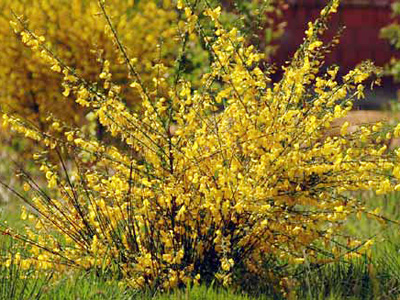
Scotch broom is a deciduous flowering shrub and member of the pea family, Fabaceae that also includes alfalfa, mimosa, and black locust. It is native to northern Africa and western and central Europe but was introduced to the East coast by the `1850s and was later introduced to California as an ornamental. It is currently found from Maine to Alabama, and from California north to British Columbia. Scotch broom likes full sunlight and dry sandy soil but tolerates less. It is aggressive and invades dry hillsides, pastures, forest clearing, dry scrublands, dry riverbeds, dunes, swamps, marshes, bog margins, and waterways. Its success is due to prolific seed production, long viability of seeds, green stems that allow photosynthesis all year around, and the nitrogen-fixing bacteria in its roots that enrich nutrient poor soils. As the plants enrich the soil they produce conditions that favor other non-native weeds that join scotch broom in overwhelming native plants. In addition, scotch broom is not palatable to wild life and its establishment may force animals to starve or go elsewhere. Photo Credit nps.gov
Description: Growing 4-8’ tall, this shrub has trifoliate leaves that are sparsely distributed on slender branches and have ½” long leaflets. The bright yellow flowers are fragrant, up to 1” long, and give way to flattened, pea-like green pods up to 2” long. When the pods are mature they are brown to black and explosively eject their seeds. The seeds may remain viable in the soil for up to 80 years.
Control: Control of Scotch broom is difficult because of the long viability of the seeds and the tendency of the roots to sprout when the plants are cut; even a small piece of root can produce a new plant. Removing plants by hand or machine before bloom is essential but must be done over many years because of the regrowth of roots. Cutting or burning the shrubs once will worsen the problem in the long run so follow up is essential. Broad spectrum herbicide control is moderately successful and biological controls may offer success in the future.